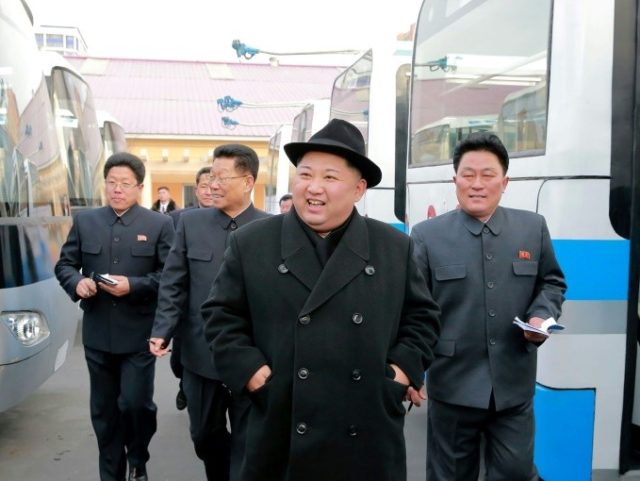North Korea’s Ministry of Foreign Affairs announced on Saturday that the communist regime would hold a ceremony on a date between May 23 and 25 to permanently shut down the Punggye-ri Nuclear Test Site, and journalists from five countries, including the United States, were invited to attend.
The announcement appeared on the Korean Central News Agency (KCNA) website, and appeared to be a gesture of goodwill towards the international community, which has pressured North Korea for years to dismantle its illegal nuclear weapons program. The ceremony will occur less than a month before a planned in-person meeting between dictator Kim Jong-un and U.S. President Donald Trump, scheduled for June 12.
The press release from the Foreign Ministry did not specifically name the Punggye-ri site, describing it only as the “northern nuclear test ground of the DPRK [Democratic People’s Republic of Korea].” There is no evidence, however, that North Korea possesses any other nuclear test sites, active or otherwise.
“A ceremony for dismantling the nuclear test ground is now scheduled between May 23 and 25, depending on weather condition,” KCNA announced. “Dismantlement of the nuclear test ground will be done in the following sequence: making all tunnels of the test ground collapse by explosion; completely blocking entries; removing all observation facilities, research institutes and structures of guard units on the ground.”
The North Korean Foreign Ministry affirms that, following the ceremony, the site will be “completely closed.” It adds that international journalists will be welcomed into the country “to conduct on-the-spot coverage in order to show in a transparent manner the dismantlement of the northern nuclear test ground.” Journalists applying to cover the event will be limited to citizens of China, Russia, the United States, the United Kingdom, and South Korea, due to the remote and diminutive nature of the site.
The North Korean communist regime will also provide transportation directly from Beijing, claiming this to be necessary “in consideration of the fact that the test ground is located in the uninhabited deep mountain area.” Full control of transportation and lodging will allow North Korean officials to control the movements of the journalists and prevent them from encountering any individuals unauthorized to speak to foreigners or venture into territories the government does not wish them to see.
North Korea already implements these strict controls with tourists, who are assigned a personal “guide” for the entirety of their stay in the country that prevents them from steering away from government-designated areas and keeps foreigners from asking potentially compromising questions or interacting with North Korean citizens, potentially exposing them to ideas hostile to the Kim dynasty.
Kim Jong-un has repeatedly expressed a desire to see the full denuclearization of the Korean peninsula in several unprecedented meetings held this year – two with Chinese Communist Party leader Xi Jinping and one with South Korean President Moon Jae-in. In a meeting with senior South Korean officials in March, Kim reportedly said that denuclearization was father Kim Jong-il’s “dying wish.” Skeptics note Kim has not specifically rejected the notion of North Korea being armed with nuclear weapons and could be defining “denuclearization” as the removal of American nuclear assets from the region, present as a result of the aftermath of World War II and the Korean War.
How much of an effect dismantling the Punggye-ri Nuclear Test Site will have on North Korea’s nuclear development has become a matter of intense debate in the West. Following North Korea’s sixth nuclear weapons test in September, Japanese media reported that the chamber of the test site where the bomb was set off, deep within northern Mount Mantap, had collapsed into itself, killing 200 workers. Satellite images reportedly showed significant damage to not just the Nuclear Test Site, but the mountain itself. In April, two separate groups of academics independently concluded, citing satellite images, that Mount Mantap had partially collapsed, rendering it useless as a nuclear test site – any further testing could collapse the mountain and send clouds of nuclear fumes blasting into the sky, threatening nearby China.
This week, a new study using the relative distance between international satellites and Mount Mantap found that the mountain had lost half a meter in height and expanded by 3.5 meters. Evidence suggests, the researchers observed, that the mountain was still sinking.

COMMENTS
Please let us know if you're having issues with commenting.